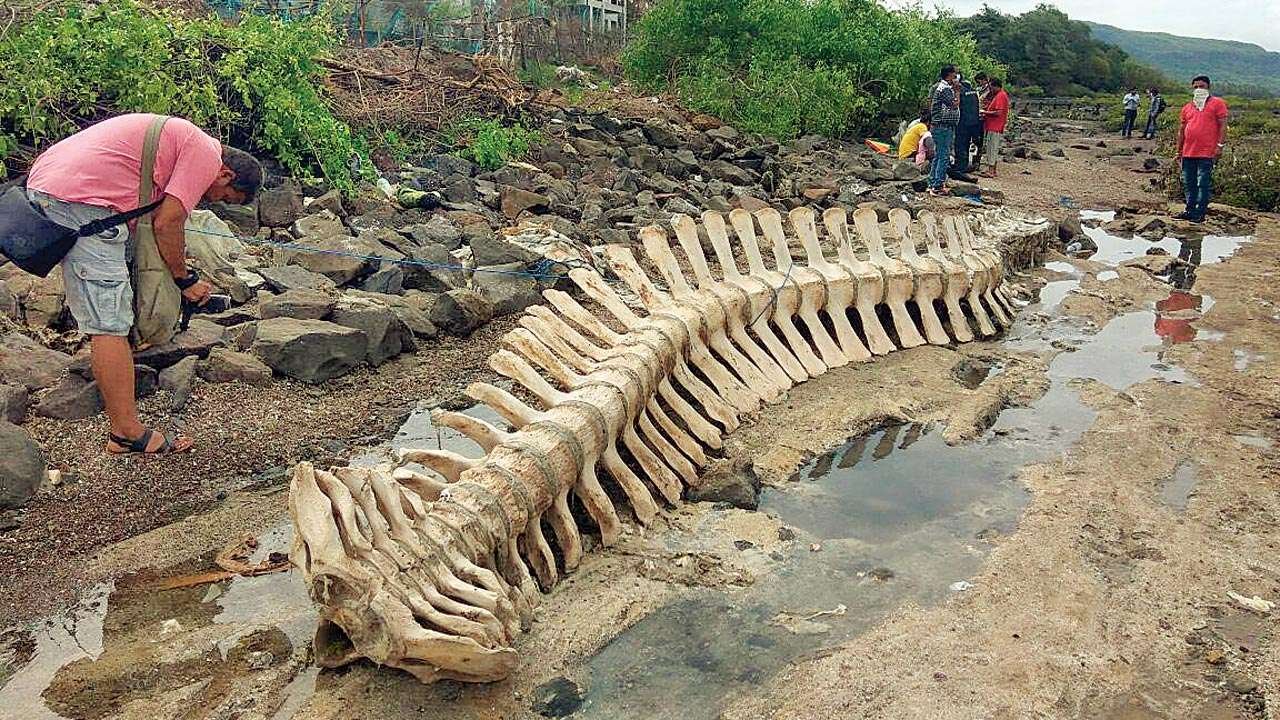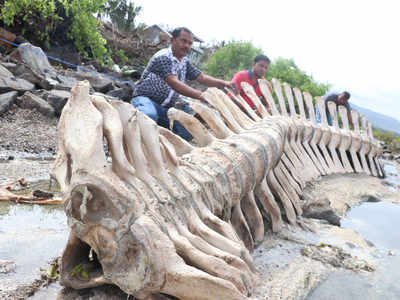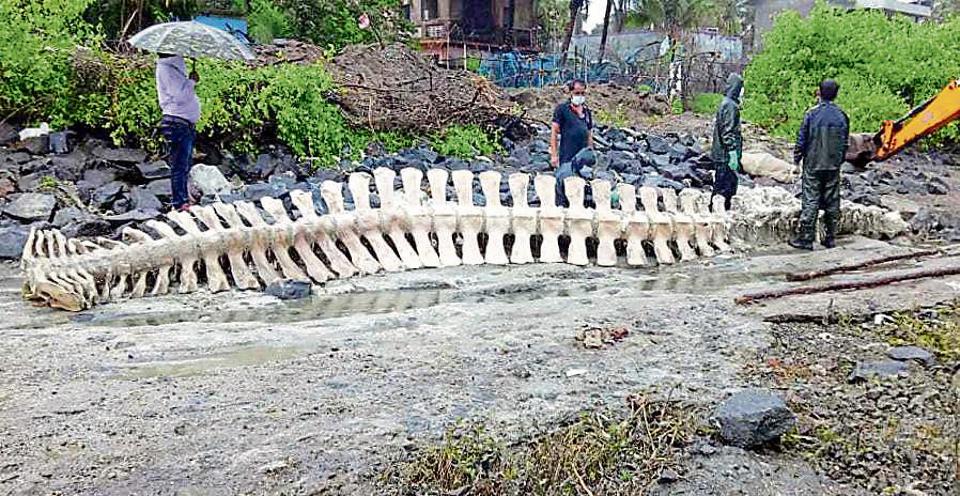Frank Hadfield and his team from Dinosaur Valley Studios in East Coulee, Alta., are just back from a trip to Newport, Oregon, where they collected bones of a blue whale.
The idea is to mount the skeleton on a metal frame to make it look like it’s swimming in the ocean. It’s the biggest project the team has ever tackled.

“We’re going to have it in a pose that’s very dynamic,” said Hadfield, who is the president of the company. “So it shows how these giant animals were still quite active in their environment in the ocean so that’s our challenge, and it is going to be exhibited outside so that’s another challenge as well with the Oregon weather.”

The project is for the Oregon State University’s (OSU) Hatfield Marine Science Center.015 at Gold Beach, Oregon. The remains were dismembered, with the pieces put in nets and sunk to the bottom of the ocean for three years to have the flesh cleaned off the bones.
When Hadfield’s team arrived, they organized the bones to make sure they were all there.
They soon discovered a problem with the animal’s skull. Researchers believe the blue whale may have been struck by a ship.
“When they found the animal and did the necropsy on it, they discovered that there was an extensive damage to the cranium, the top of the skull,” said Hadfield.
“We decided that it would be far too expensive and labor intensive to try and rehabilitate the real skull.”

Now, Eddie Dahm is making an entire replica of the skull out of foam and plastic. He’s the team’s paleo artist and is working with a 3D model of a blue whale to cut pieces using a CDC machine.
“To make sure it was the scale, I actually measured the occipital condyle, which is kind of the bone at the base of your skull,” he said. “I compared that to the one there because it was still in good condition so using that measurement, I was able to ensure that the model I’m making was at the correct scale.”
While it’s not ideal scientifically, the recreated skull will reduce the weight of the finished skeletal display.

“The lower jaws alone, each jaw weighs 700 pounds (317 kilograms) and the top skull, the cranial vault, we estimated the weight would have been over two tonnes (2,000 kilograms),” said Hadfield. “That’s a huge engineering challenge to have something as delicate as those bones but with that massive weight so yeah, I think it’s better that we went with this replica.”
Before the mounting process begins the team has to further clean the bones and repair some that were broken.

“We’re going to decrease them, we’re going to soak them in a hydrogen peroxide solution to disinfect them and whiten up take some of the mold that is developed off of them,” he said. “After that’s done, we’re going to be sealing them and conserving them in a UV and weather resistant solution and then the fabrication of the mount starts.”
Hadfield says the team should be finished the project by fall or early winter 2023 and then ship them back to Oregon where they’ll be on display outside the new Gladys Valley Marine Studies Building on the OSU campus.